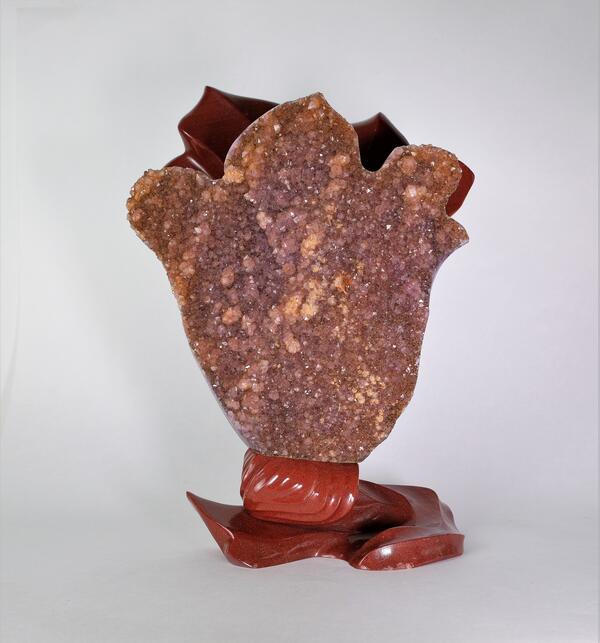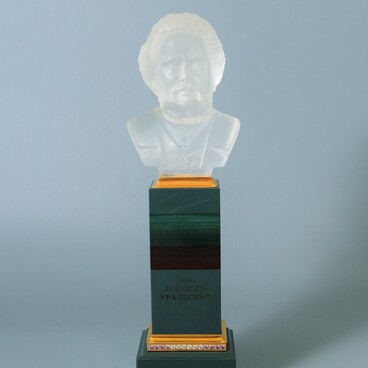Due to this description, craftsmen traditionally carve bell-shaped stone flowers.
The vase from the collection of the Museum of Stone-Cutting and Jewelry Art History was made from the so-called “joint stone”. This is quite a rare natural phenomenon, when another mineral grows on one rock. In this case, a druse of amethyst crystals was formed on the sealing-wax jasper. In the 1960's and 1970's, the “Russkiye Samotsvety” factory made an entire series of items made from such stones.
Besides the vase “Stone Flower”, artist Yevgeny Vasilyev also created about 5,000 sketches of stone-cutting and jewelry pieces at the “Russkiye Samotsvety” factory: stationery sets, ashtrays, candlesticks, jewelry, decorative panels. Most of them were produced in small batches. Vasilyev worked with agate, rhodonite, onyx, serpentinite, but preferred Ural jasper to all other materials.
The so-called Urals Jasper Belt stretches along the eastern slope of the mountain range for more than two thousand kilometers. In total, there are about 200 deposits of this stone in the region. The most valuable varieties are the grayish-green Kalkan jasper, the reddish-green banded jasper, the variegated jasper, and the dark cherry striate jasper.
The first amethysts in the Urals were discovered in the 18th century on the Aduy river banks. There were also found aquamarines and beryls. Later two more mines were established: the Talyan and Vatikha deposits. The minerals of a rich reddish-purple hue were the most valuable.




